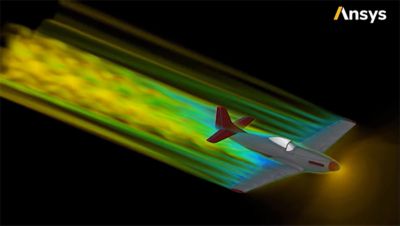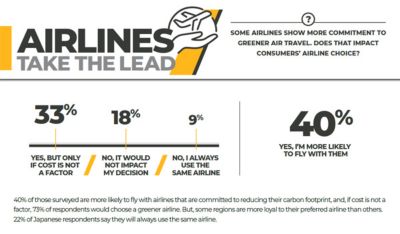-
United States -
United Kingdom -
India -
France -
Deutschland -
Italia -
日本 -
대한민국 -
中国 -
台灣
-
Ansys s'engage à préparer les étudiants d'aujourd'hui à la réussite, en leur fournissant gratuitement un logiciel de simulation.
-
Ansys s'engage à préparer les étudiants d'aujourd'hui à la réussite, en leur fournissant gratuitement un logiciel de simulation.
-
Ansys s'engage à préparer les étudiants d'aujourd'hui à la réussite, en leur fournissant gratuitement un logiciel de simulation.
-
Contactez-nous -
Carrières -
Étudiants et universitaires -
-
S'inscrire -
Déconnexion -
Espace client -
Support -
Communautés partenaires -
Contacter le service commercial
Pour les États-Unis et le Canada
+1 844.462.6797
-
ANSYS BLOG
December 17, 2020
Sustainability Takes Flight: Aerodynamic Lift and Energy Efficiency
Growing concerns about climate change and global warming are shining a harsh spotlight on the environmental impacts of many industries, including aviation.
According to Quartz, carbon emissions produced by the worldwide aviation industry have grown by 70% since 2005, and they’re projected to increase by up to 700% by 2050 ― unless there are fundamental changes to conventional aviation technologies. As consumer demand for air travel continues to rise in both rich and poor countries, the search is on for more sustainable technologies that can reduce planes’ emissions, fossil fuel consumption and other environmental impacts. According to a study conducted by Atomik Research on behalf of Ansys, 40% of consumers surveyed globally are more likely to fly with airlines that are committed to reducing their carbon footprint, and, if cost is not a factor, 73% of respondents would choose a greener airline.
The Weight of Sustainable Flight
Aviation engineers are exploring possible alternatives to traditional jet engines that rely on combustion and fossil fuels, including the use of electric batteries to power long-range flights. However, a downside is the heavy weight of these batteries. Engineers are working on lighter-weight battery designs, as well as other weight-related innovations such as the use of lightweight composite materials for plane fuselage designs. Aerospace engineers are also exploring new wing and fuselage shapes that could also improve sustainability.
These innovations raise several critical questions: Why is the plane’s weight such an important consideration in aviation? How does it impact sustainability? And how does the plane’s shape also contribute to its environmental impact?
Take Off With Ansys Innovation Courses
The next generation of aerospace engineers can get answers to these and other foundational questions in an Ansys Innovation Course called “Understanding Airplane Lift and Physics.” By taking the course, students and educators can gain a basic understanding of how a plane’s wing surface and aerodynamic shape impact its lift ― and, therefore, its energy efficiency. Specific events such as take-offs and ascents, which are typically energy-intensive, may also require lower levels of fuel consumption if lift is optimized via engineering.
The Understanding Airplane Lift and Physics Course is part of a series of four STEM-related courses designed for younger students. The class is led by Marco Coderoni, a Technical Support Engineer II at Ansys. Marco’s areas of specialization include aeroacoustics, aerodynamics, turbulence and compressible flows. He holds a Ph.D. in Aerospace Engineering from Embry-Riddle Aeronautical University, USA, along with a masters in Aeronautical Engineering and a bachelors in Mechanical Engineering, both from the Università degli Studi Roma Tre, Italy.
Older students can take advantage of two more advanced courses that focus on lift, aerodynamics and other aviation principles: Real External Flows and 3D Transonic Flow Over a Wing. They can also access an entire lineup of Ansys fluids engineering courses that focus on complex topics such as turbulence, viscosity and fluid kinematics.
Ansys Innovation Courses include videos, handouts, practice problems and short quizzes that reinforce engineering principles for educators and students at all levels ― as well as engineering professionals who want to brush up on fundamentals. More than 50 on-demand, self-paced classes are available, all using an Ansys simulation environment to demonstrate and reinforce key learnings.
Explore the entire library of free, informative Ansys Innovation Courses.














